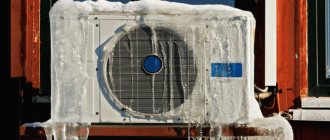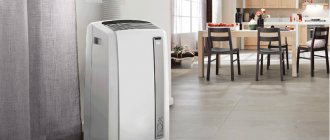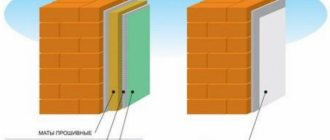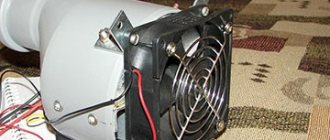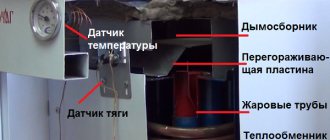Purchasing a modern air conditioner is an important and responsible matter. Heat and high temperatures are the main enemies for humans in the summer. A comfortable stay, favorable temperature, sound sleep for a person are the main parameters that justify financial investments and temporary inconveniences during installation of the system.
After a profitable purchase, a logical question arises on the agenda - how to properly and efficiently configure the operation of the equipment. Because only proper configuration and setting the correct parameters can ensure economical consumption of electrical energy.
In order to properly configure the air conditioner, you need to know what modes are available to the equipment.
Basic functions of air conditioners
In the old days, air conditioners supported only one function - cold. Modern models have a wider range of work, which may include heating, drying and other functions.
Types of modes:
- Cooling the room.
- Heating the room.
- Air drying.
- Air ventilation.
- Automatic operating mode.
Cooling is the most popular function, and the main reason for purchasing climate control equipment. It is easy to set the room cooling mode using the remote control. Thus, there is no need to install a chair under the equipment. On the remote control this function means “cool”.
Heating During the cold season, especially the off-season, when the heating season has not yet begun and the room temperature is already quite low, the “heat” function is used. By setting the temperature, the system, having reached the set parameters, goes into standby mode.
Air drying (dry) This mode is often used in winter or rainy weather. Using the “dry” function, the equipment works to dry the air in the room. As you know, indoor humidity parameters have a direct impact on the rate of spread of bacteria, the number of sick people, and more; the “dry” mode is most popular in office-type premises, shopping centers, and homes. On the control panel, “dry” has a visual designation “drop”.
Room ventilation For this mode, only the internal unit of the system is used, providing air circulation at room temperature. On the remote control it is marked “fan”, the image is a fan.
Automatic mode Having familiarized yourself with all the functions and made the appropriate settings, you not only live in the most comfortable conditions, but also use electrical energy economically, maintaining the density of your own wallet.
See also:
Installing an air conditioner yourself
Split system temperature sensors
temperature sensor in the indoor unit
It was already mentioned above that air conditioners are equipped with special temperature sensors that monitor both street and room indicators, as well as values inside the device itself.
Modern split systems have a developed self-diagnosis system, the elements of which are temperature sensors. The main ones among them are two sensors: air temperature sensors and indoor unit evaporator sensors. They determine the operating algorithm depending on the selected mode. Air conditioners are equipped with these temperature sensors in the simplest configuration.
More expensive systems are equipped with the following types of temperature sensors:
- outside air temperature sensor – does not allow the air conditioner to turn on at sub-zero and plus temperatures, which are below/above the permissible norm;
- condenser temperature sensor (there may be several of them) – is responsible for maintaining the required level of condensation pressure for a given mode when street conditions change;
- room air temperature sensor – responsible for maintaining the functionality of the compressor;
- Evaporator temperature sensor – turns off the compressor if the temperature of the air conditioner evaporator drops to zero.
temperature sensor in the remote control
Some split systems have an additional function - automatic defrosting of the heat exchanger of the external unit. This is necessary to prevent icing processes that cause the fan blades to break. The defrosting mode of the air conditioner is activated at sub-zero outside temperatures. Thermal sensors are also responsible for this.
Another function of modern split systems is the automatic selection of a mode, which, when started, sets a “comfortable” temperature at +20°C. Sensors are also responsible for the proper operation of automatic installation of standard indicators.
evaporator temperature sensor
If we talk about the temperature of the air conditioner evaporator, then there is a direct dependence on external factors - the higher the thermometer readings outside the room, the more intensely the evaporator heats up.
For all-season splits, when the compressor is turned on, the difference between the temperatures of the air and the air conditioner evaporator should be at least 5-7°C. When the compressor is turned off, these indicators change towards lower values. When a decrease does not occur, this indicates a system malfunction.
When operating the device for heating, the air parameters in the room are also taken into account. If the air conditioner temperature sensor responsible for room data shows a difference between the outside and indoor temperatures of less than 5°C, the compressor may automatically shut off or it may not start initially.
When the air conditioner is operating for cooling, the temperature at the outlet of the indoor unit should be at least 10°C below the thermometer outside. It is worth remembering that when starting a split system, these values may not be reached immediately, so cooling occurs less intensively.
The longer the air conditioner is on, the more optimally it cools.
Subtleties of the control panel (PU)
For greater convenience, modern air conditioners are equipped with an additional function, setting parameters using a control panel. It provides the ability to regulate the room climate from anywhere in the room.
Today there are 2 types of control panels, the main difference of which is the principle of signal transmission:
- Using infrared radiation.
- Through fixed wiring.
Setting up the operation of the air conditioner using the control panel ensures timely detection of operating errors displayed on the display. It should be noted that each breakdown has its own sound and light accompaniment.
What are the advantages of heating with air conditioning?
As a rule, the walls of country houses consist of lightweight structures, slightly insulated inside and decorated with decorative trim on the outside. Such walls are able to contain temperature, but not accumulate it. An alternative to capital heating is an air conditioner: by installing this device in different rooms, you can set different temperatures, while saving energy. Along with the low cost of heating with air conditioning, such a system has another advantage - the ability to bring the temperature to a comfortable one.
Due to the fact that a large volume of air is forced through the heat exchanger, the room temperature quickly reaches a comfortable value. Some air conditioners are also equipped with a protection function against voltage surges, which is especially important in a holiday village with an unstable power supply. In addition, the air conditioner is able to automatically maintain the set temperature. That is, the device only needs to be set to heat or cold, set the desired temperature parameters and forget about its existence.
Basic commands on the air conditioner control panel
Almost every model of remote control panels consists of a number of stationary commands that help you quickly make settings and adjust the work:
- Mode – setting modes
- Swing - changing the location of the curtains in accordance with the air flow
- Direction – changing the location of the curtains for air supply
- Fan – setting the power of air flows
- Turbo – selecting the air conditioner to operate at maximum
- Reset - reload installed data
- Lock – lock settings
- Led – use of light indication
- Clock – time setting
If the air conditioner unit does not respond to data changes, you should inspect the equipment for quality of operation. The cause of malfunctions may be: weak batteries; mechanical damage to the case, keys, screen; malfunction of the infrared indicator.
When using the launcher you cannot:
- Dip into water.
- Replace the batteries one by one.
- Reuse disposable batteries.
- Move more than 8 meters away from the control unit.
- Cause mechanical damage.
Considering the LG air conditioner: instructions for the control panel
The remote control for LG air conditioners is a liquid crystal screen unit displaying air conditioner parameters.
It has this functionality:
- Air temperature display;
- The fan has 3 speeds and auto mode;
- The JetCool button turns on the fast cooling mode, and intense air flow is supplied for 30 minutes until the room temperature reaches the temperature you specify;
- The function of automatically moving the blinds can be turned on by pressing the AutoSwing button, after which automatic control begins, and this does not lead to a decrease in air humidity and a more comfortable distribution of air flow;
- In healthy dehydration mode, the air conditioner reduces air humidity and does not overcool it;
- The automatic restart function is necessary to resume work if the power supply unexpectedly disappears;
- The self-diagnosis function makes it possible to turn on the chaos mode, which causes the blinds to swing up and down, creating the effect of wind blowing;
- Ionization is only available in air conditioners with filters;
- Displays room temperature.
All these functions can be seen on the remote control included with your installation. Production of Ballu air conditioner: instructions for the remote control
Not everyone can understand how an air conditioner of this brand works in one mode or another.
Turning on the
Ballu for heating occurs as follows:
- Press the ON/OFF button;
- After pressing, the temperature and mode selection indicator appears on the panel, press MODE, then select the heating mode, it is indicated by the sun;
- Use the + and – buttons to set the required temperature;
- By pressing the FAN button, select the fan rotation speed;
- Turn it off with the ON/OFF button.
If you read the instructions for the remote control, there is a section about controlling the panel itself. By controlling the panel, you can set the same functions as the remote control.
All air conditioner remote controls come with clear instructions and you won’t have any problems understanding them. If, after reading the instructions, you still do not understand some of the nuances, then you should contact the service center.
Features of using a thermostat
Using a thermostat, you can easily control and regulate the indoor climate. Often it is located on the wall, where the sun's rays, air flows, and secondary heating devices do not reach.
Servicing the thermostat does not require specialized procedures. Often, for normal operation, it is enough to keep the device clean and dry. Using the thermostat capabilities, the air conditioner can be set to heat or cool the room.
Sequence of setting up any air conditioner
- First, turn on the air conditioner in the “network”;
- Turn on the device with the “On/off” button;
- Select the desired mode with the “Mode” button. We wait 10 minutes, and at the same time continue setting up the following points;
- We adjust the desired temperature using the “Temp” buttons or arrows;
- If required, we adjust the desired fan rotation speed;
- If required, we adjust the direction of air flow by adjusting the “Swing” blinds;
- If required, we activate additional options - ionizer, self-cleaning, “i-feel”, “sleep”, “turbo” and others.
PS If the current temperature in the room matches the set temperature, the air conditioner will not cool (or heat depending on the mode).
Causes of air conditioner failure
In order for the air conditioner to serve for many years, it is necessary to carry out regular maintenance and carefully monitor its operation. If the slightest deviation is detected, experts recommend turning off the power to the device and contacting the appropriate company.
Air conditioner malfunctions occur for several reasons, namely:
- Failure to comply with the maintenance schedule.
- Lack of refrigerant.
- constant operation at maximum mode.
- Setting incorrect parameters.
- Damage to the external unit.
